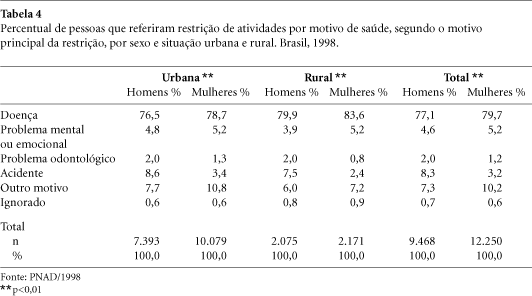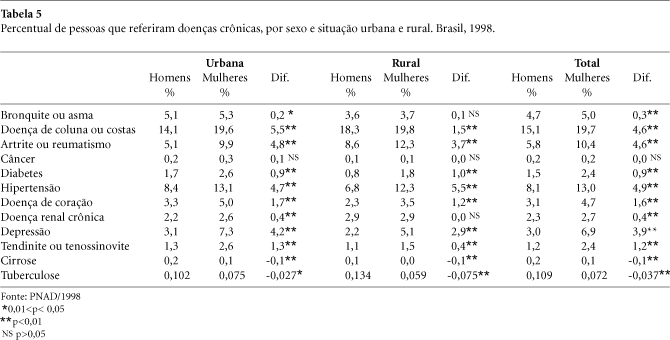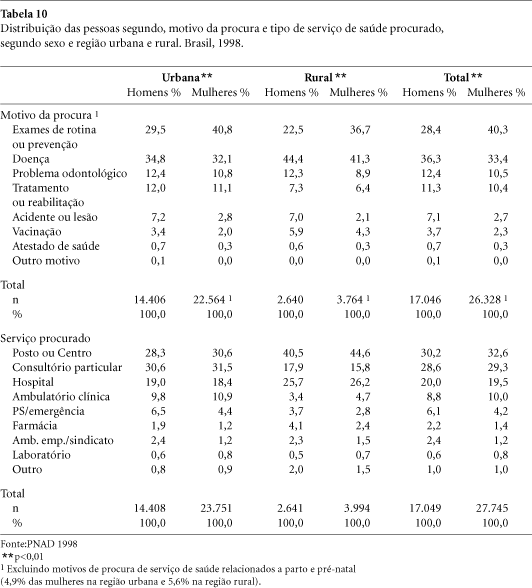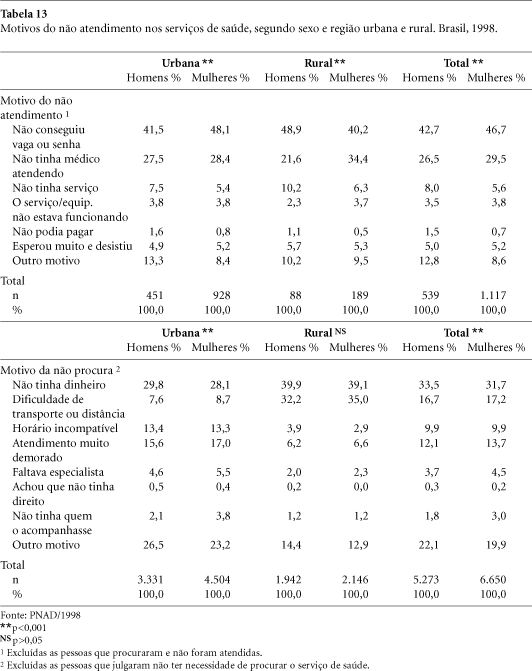This paper analyses the profile of perceived morbidity, access and use of health services among men and women in Brazil according to age and urban/rural situation. Data from PNAD/98 showed that gender differences in morbidity vary with age: unfavorable to boys up to 10 years old and to women after 15 years of age. Differences rise with age up to age 64 and slow down after on. The high prevalence of attendance suggests that barriers for access for those who seek health care are small. Nevertheless, the high percentage of people who did not seek health services among those who believe needed, indicates that access are important and dependent on the supply. The health plan coverage is greater among urban areas, but there is no significant gender differences within the areas. Differences between women and men in acute care rates are low, compared with the preventive care rates, greater for women. Inpatient rates were greater for women, even after excluding delivery. The financing of inpatient hospitalizations was not different between sexes, but there was a higher use of health plan for women in the urban sectors and higher use of the public health system (SUS) for rural women and out of pocket payment for rural men.
Gender; Perceived morbidity; Access; Health services utilization














